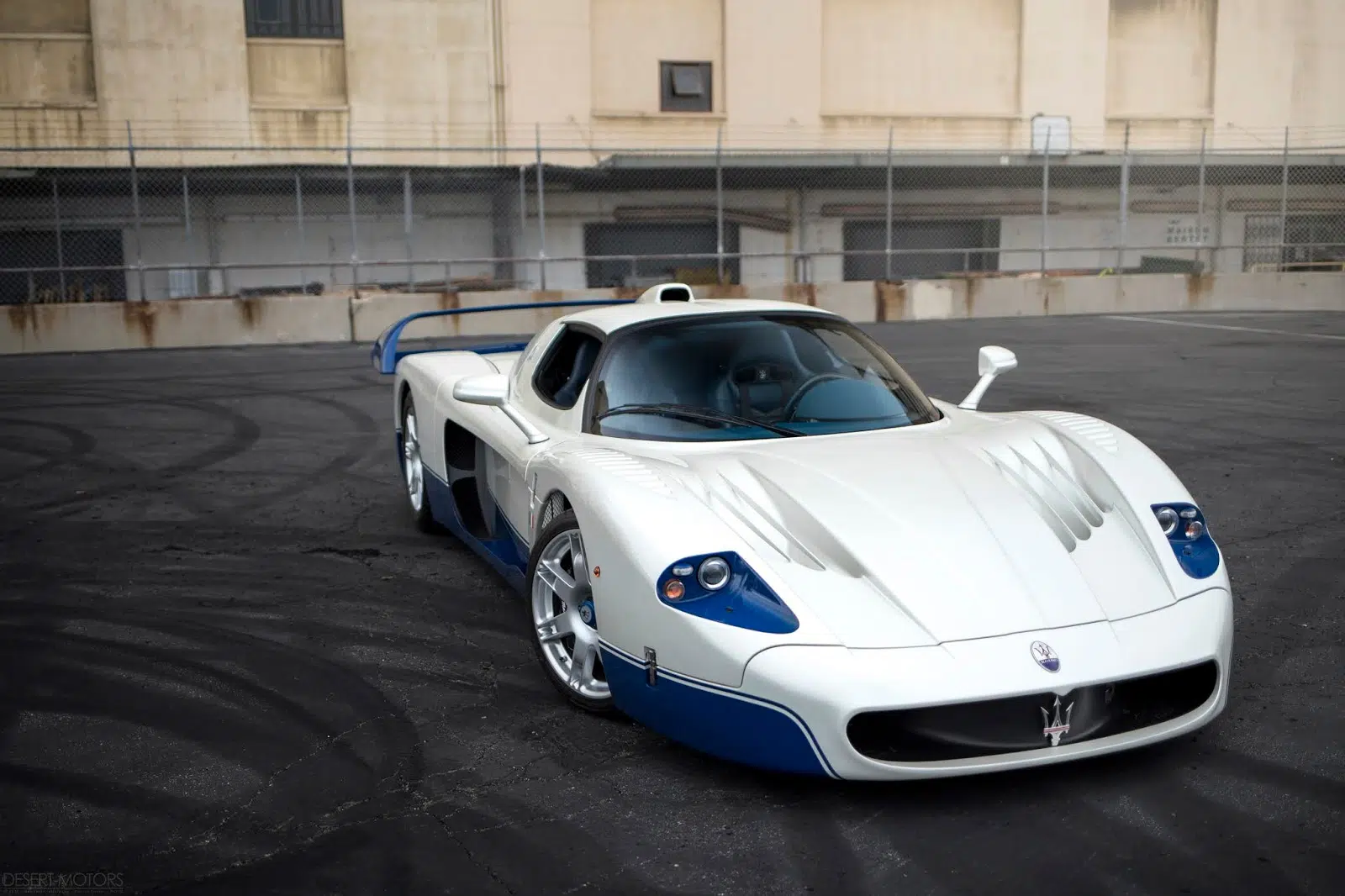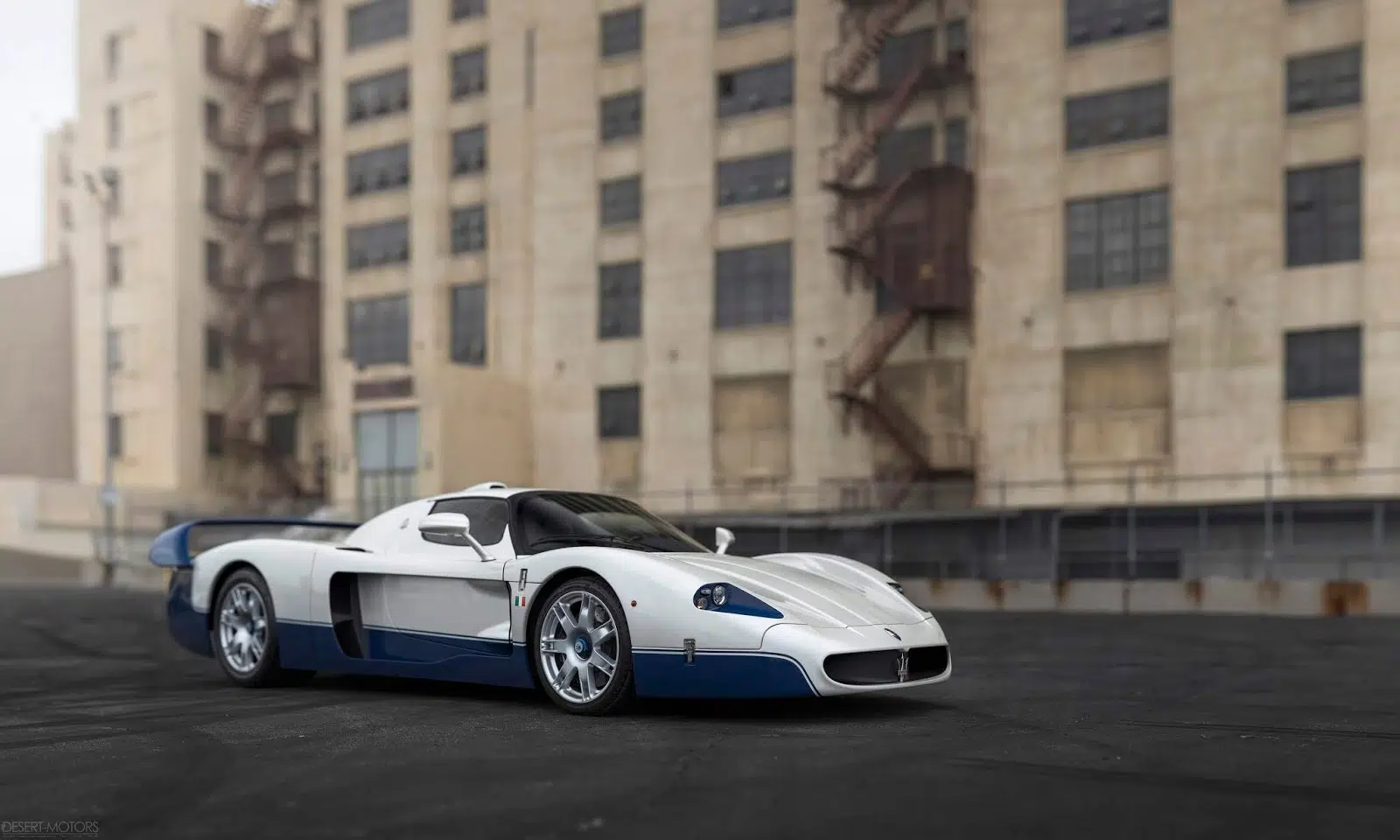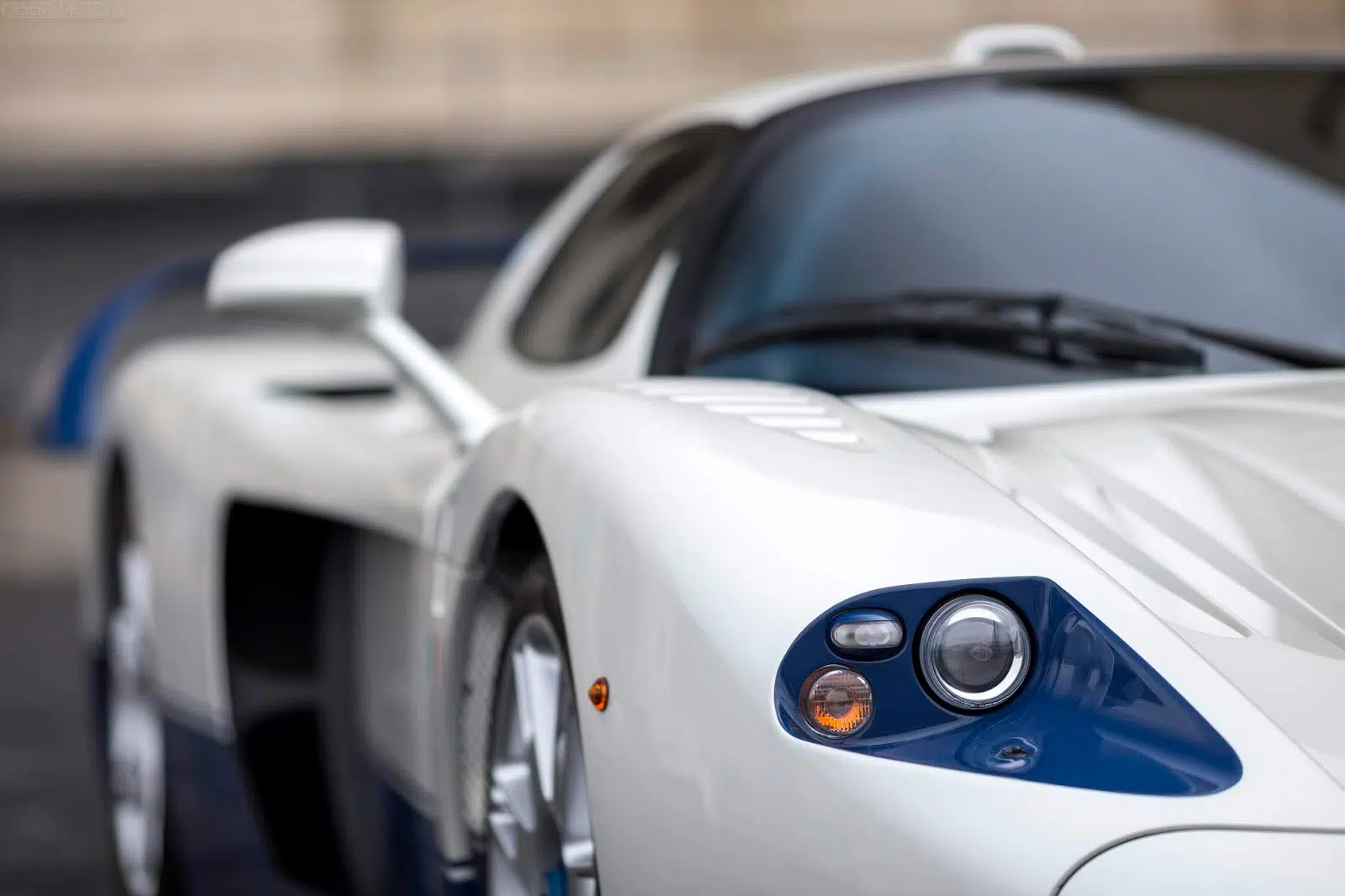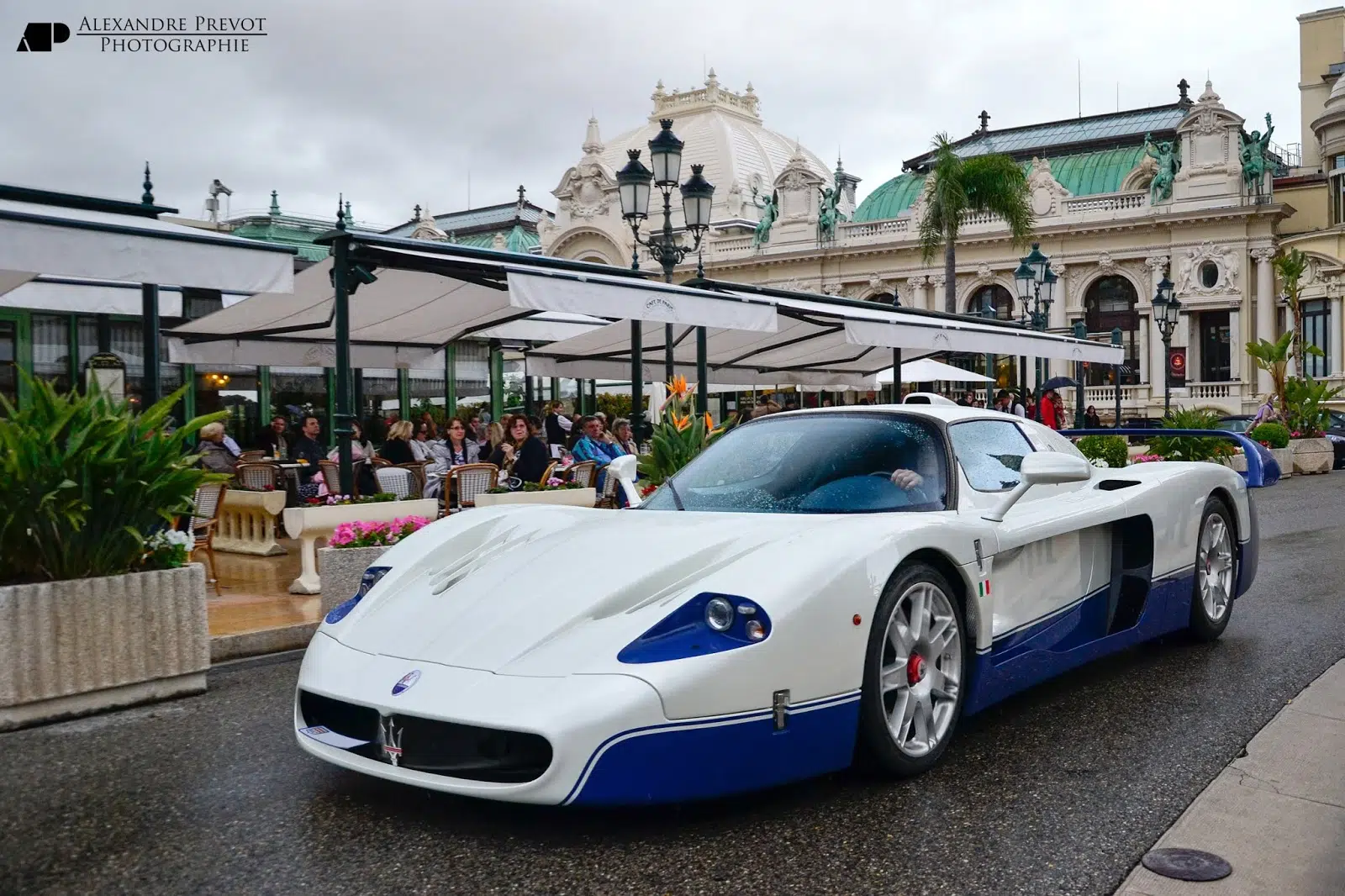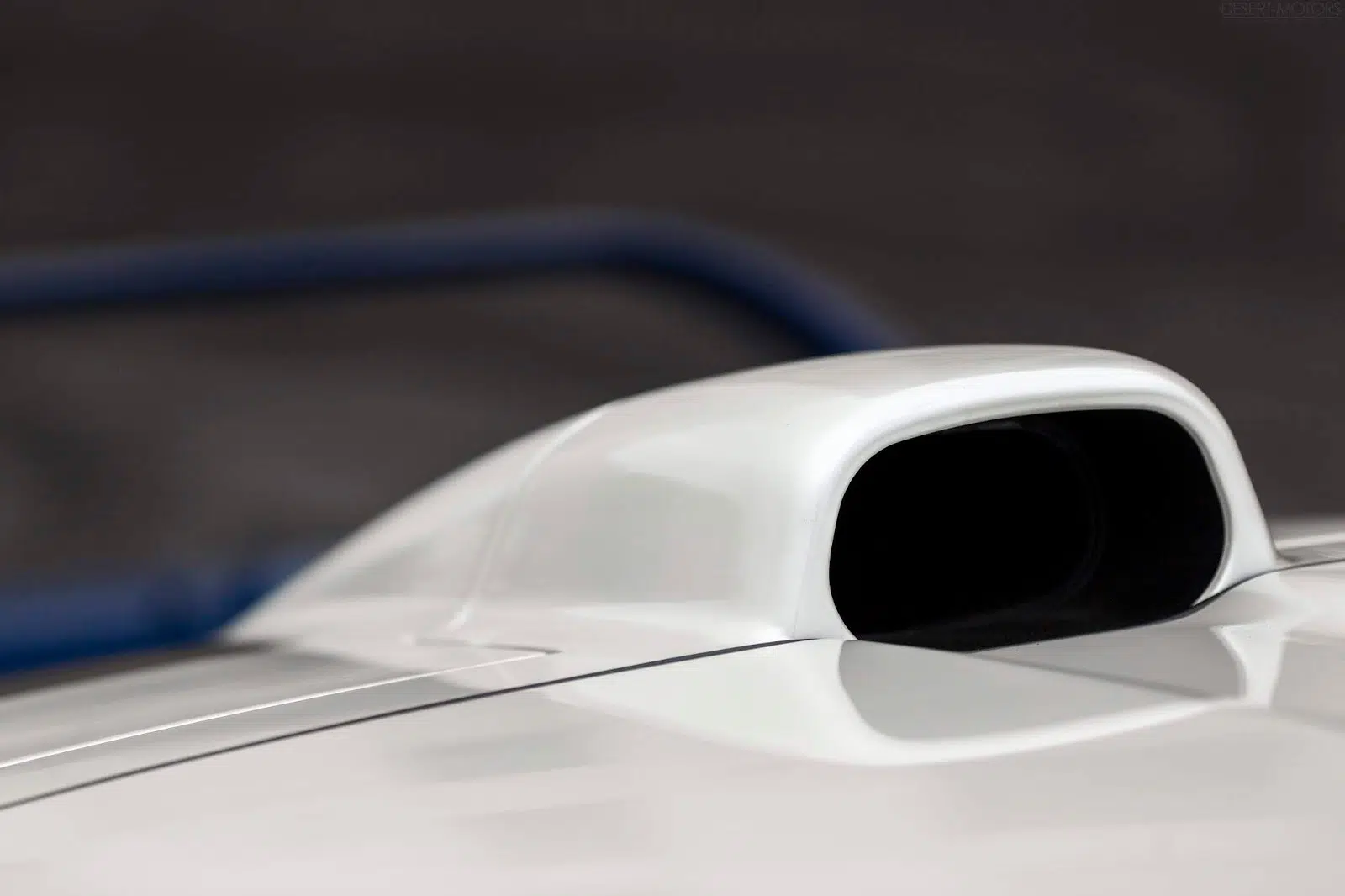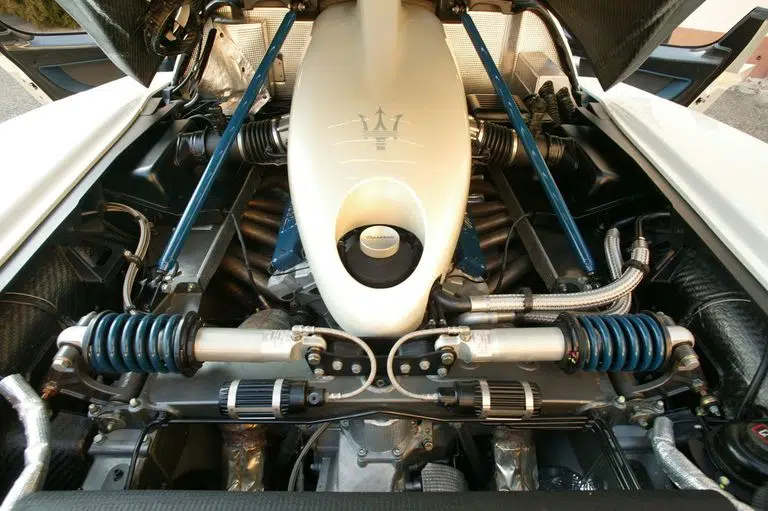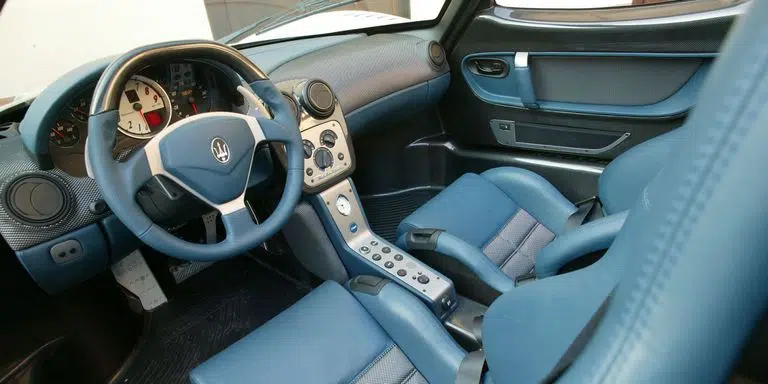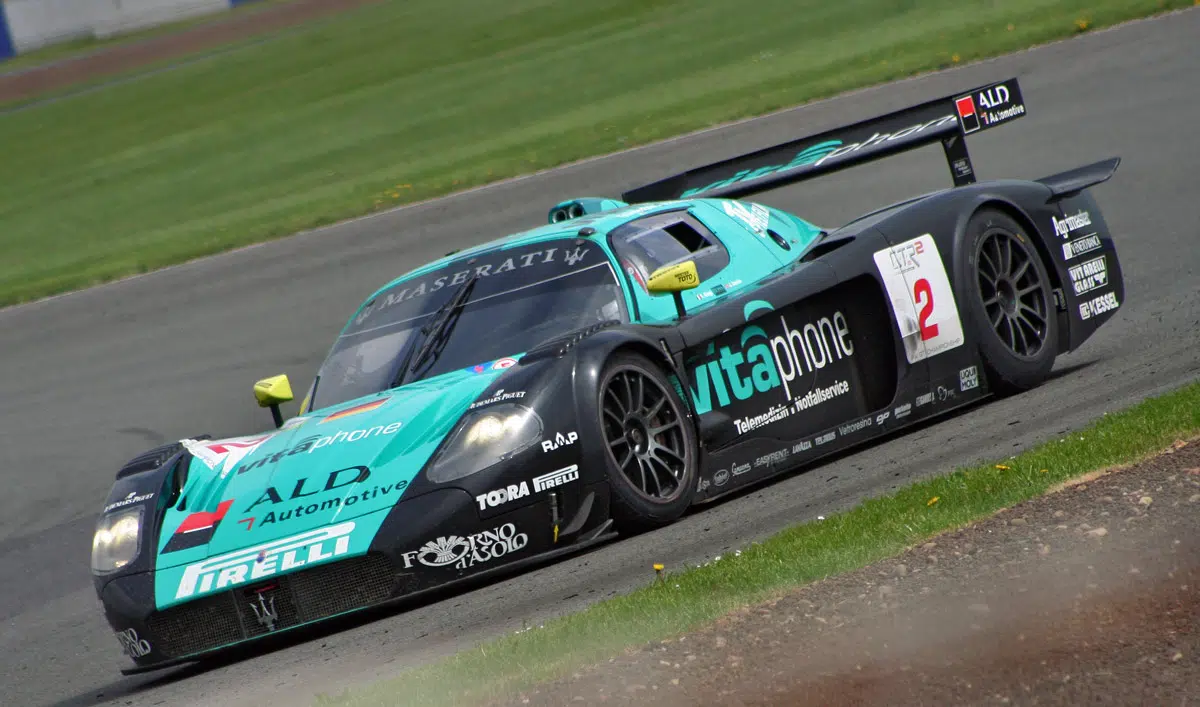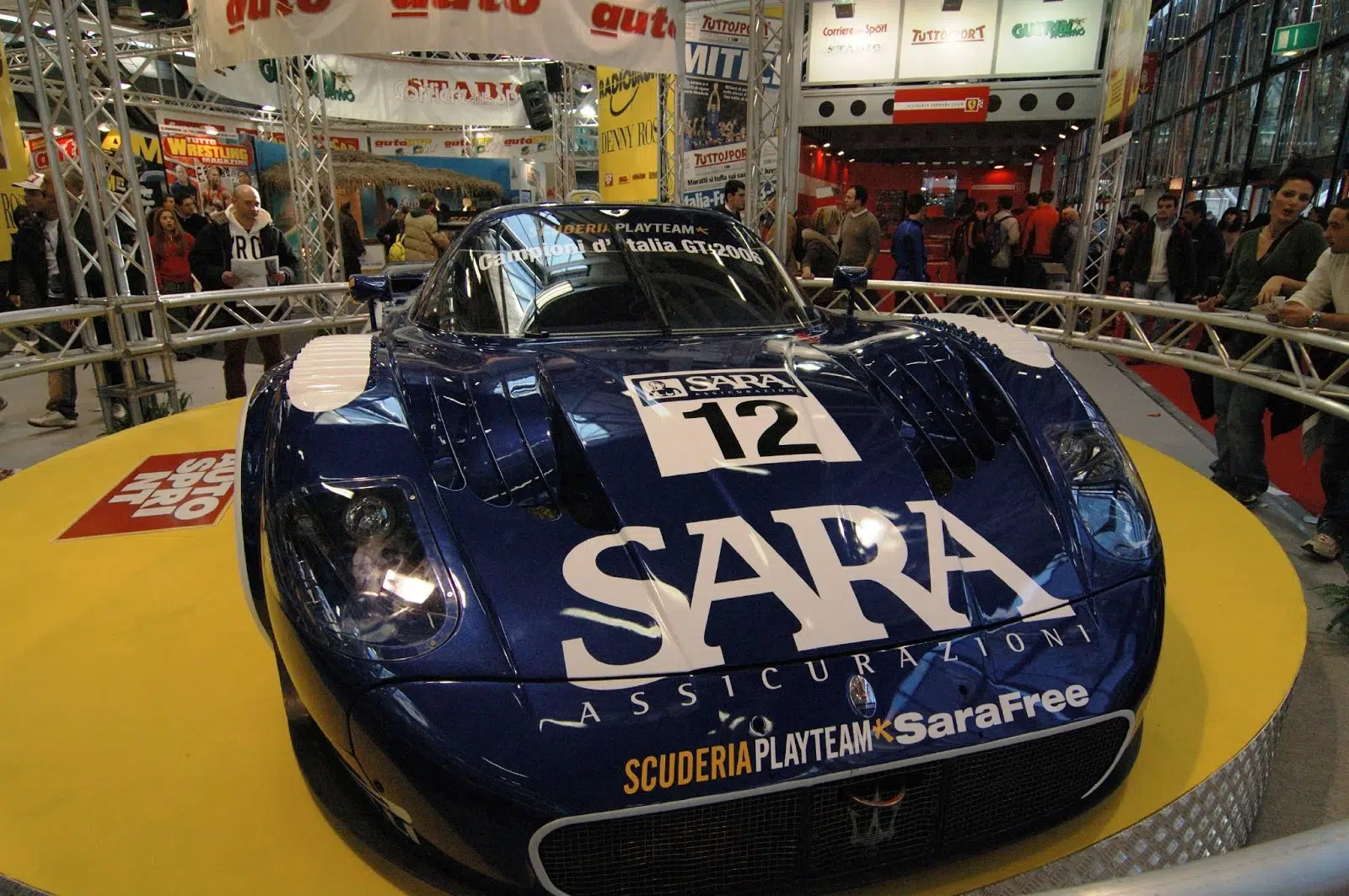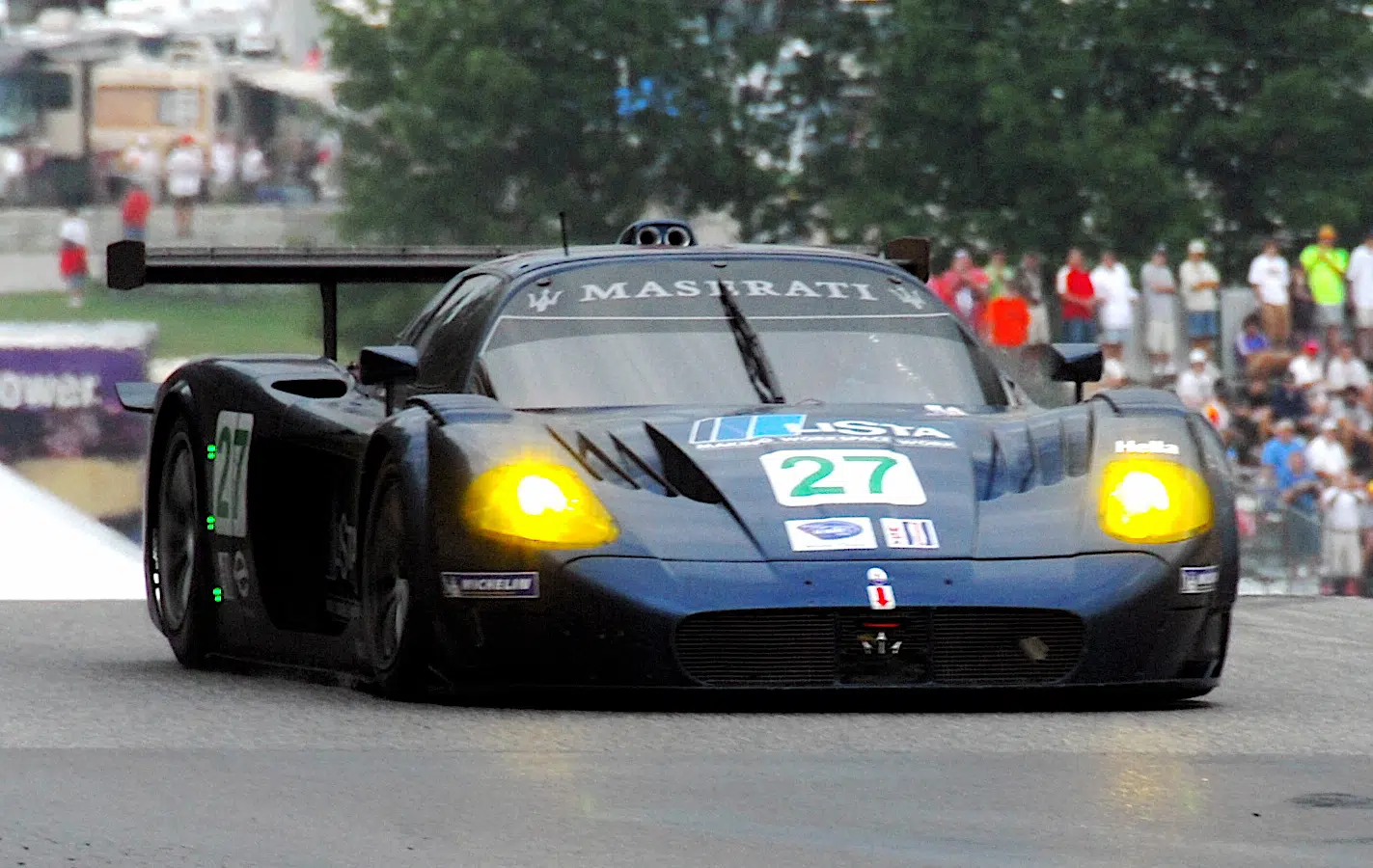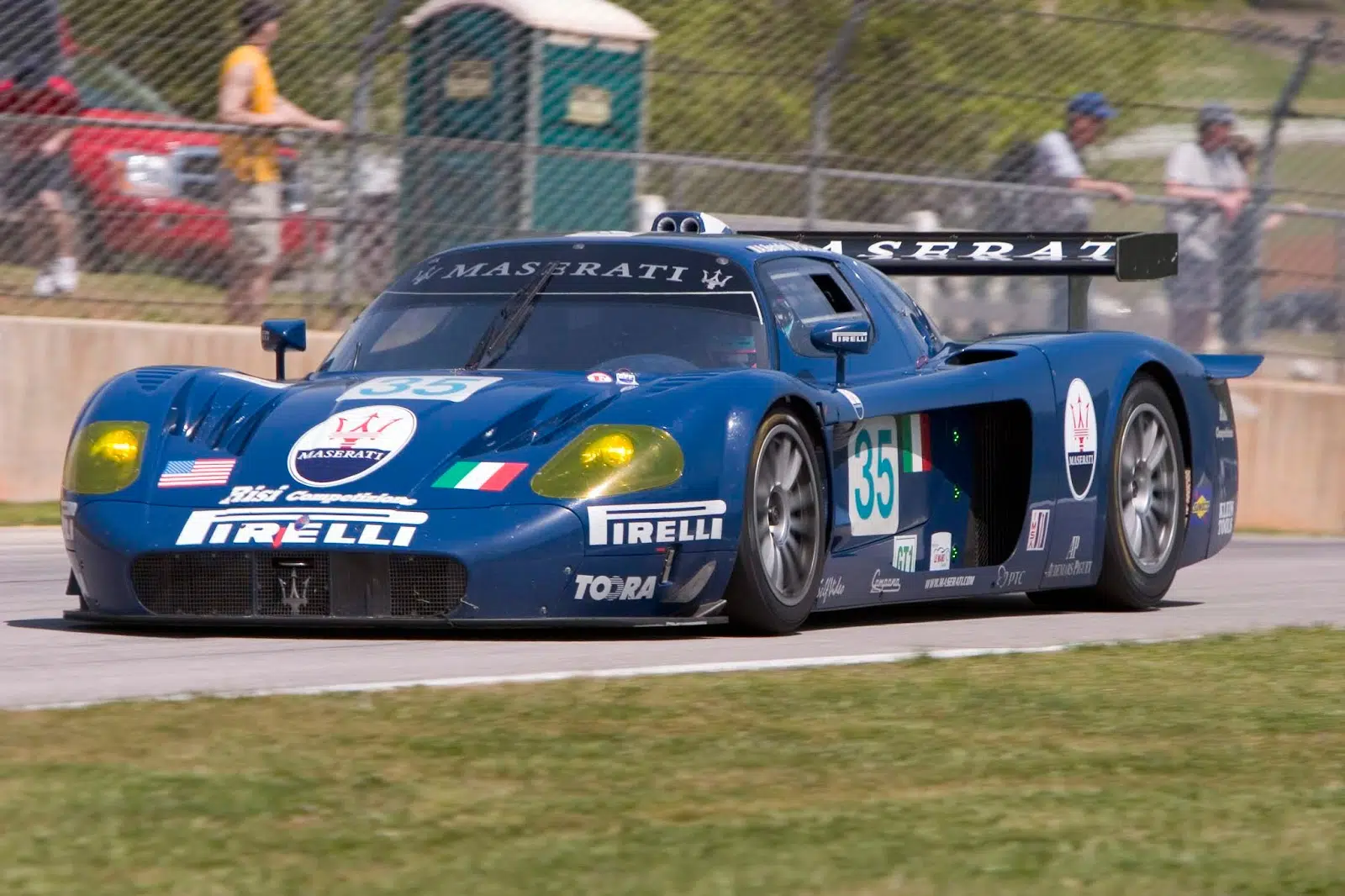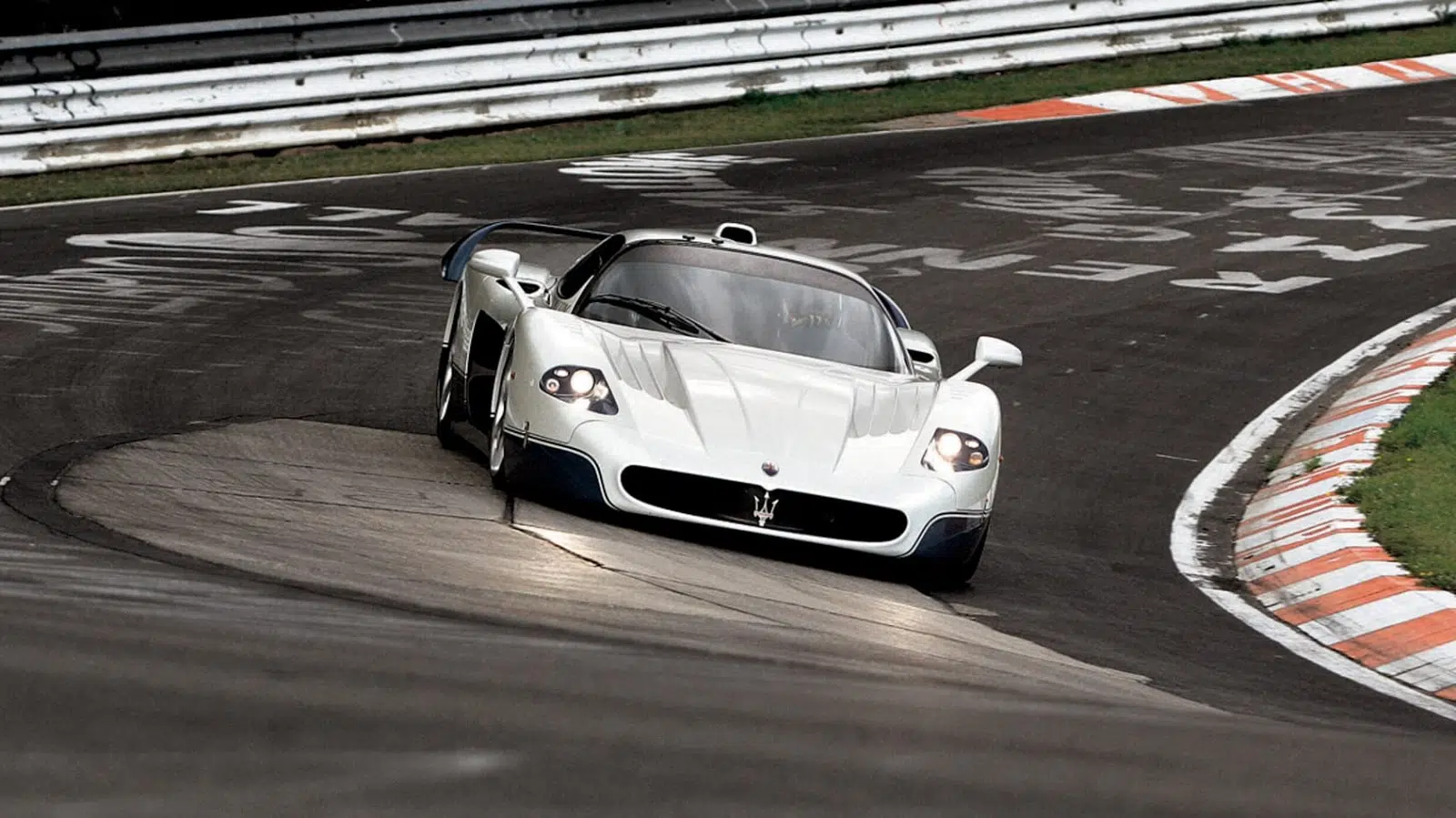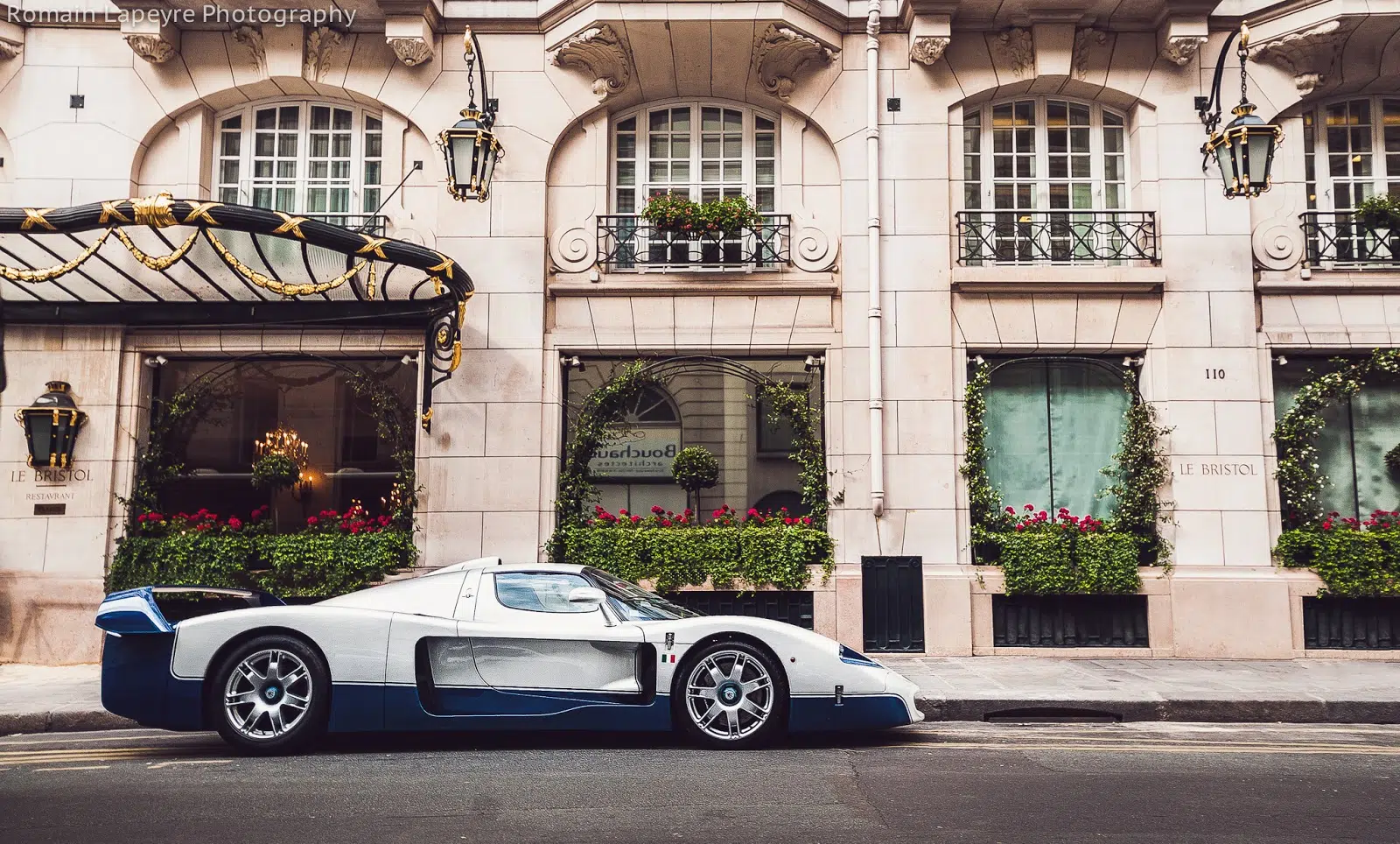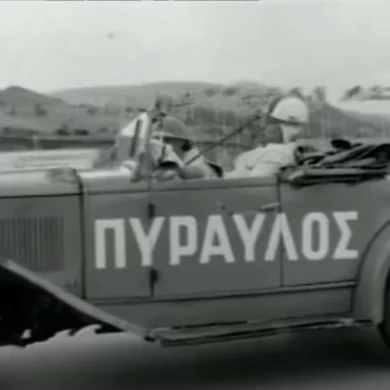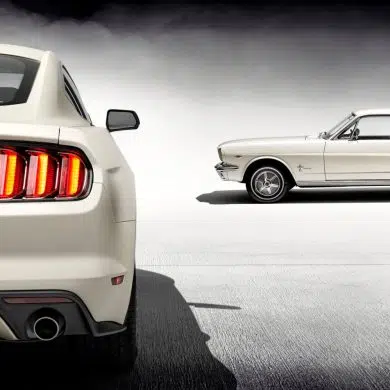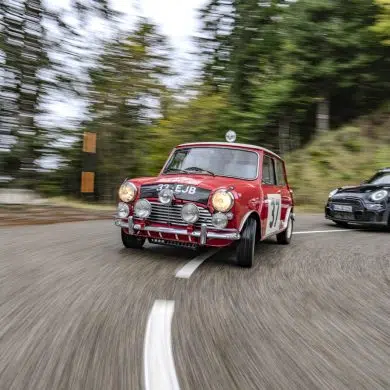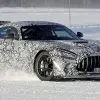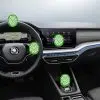TopSpeed Retro Car Sunday - Chapter : Maserati MC12
After the tribute to 4 of the 5 cars of the Ferrari Grand Pentada (288 GTO, F40, F50 & Enzo), we couldn't help but do one on the Enzo's "sequel", the MC12. The Maserati MC12 is in a sense the Enzo Aperta, as both cars were a joint project between the two manufacturers.
Evolution
Under the guidance and supervision of Giorgio Ascanelli, Maserati began developing a car to compete in the FIA GT Touring class. The original designation of the MC12 was "MCC" ("Maserati Corse Competizione") for the racing version and "MCS" ("Maserati Corse Stradale") for the road version.
The main part of the MC12's design was undertaken by Frank Stephenson, Ferrari-Maserati's Head of Development and Design at the time, with the original design however being derived from aerodynamic coil testing, an idea proposed by Giorgetto Giugiaro.
The "MCC", has many design elements in common with the MC12, with a strong and distinct difference, however, being the rear spoiler. The main development driver on this project was Andrea Bertoli, but his duties were shared with Michael Schumacher, who did test laps with the MCC at Fiorano.
The MC12 is very much based on the Enzo, including a slightly differentiated engine, the same gearbox (although Maserati calls it Cambiocorsa), and a shared chassis and axles. The MC12, of course, has some subtle differences in terms of design. It's wider (the MC12 is wider than a Hummer H2 !), longer and only slightly taller. One very distinct, common, design feature they share is the front windshield.
The exterior of the MC12
The entire outer body of the MC12 is made entirely of carbon fibre. The extensive use of aerodynamic wire during design and development has resulted in the car producing a vertical aerodynamic load throughout its length. The lower part of the MC12 is all smooth, in order to generate downforce from there as well, while the rear bumper has a large diffuser to smooth the airflow.
Right at the end of the removable roof section, the MC12 is targa-top, there's a roof scoop which takes care of the air supply to the engine intake, with this being the design element that makes it slightly taller than the Enzo. Its rear spoiler is one of the widest ever fitted
ever in a production car, with a width of 2 metres, while
its thickness is only 3 cm.
The exterior was available in a white-blue colour scheme, homage to the colours of America Comoradi who raced in the 1960s with the Maserati Tipo Birdcage. There was, however, the option of choosing another colour for the exterior, at an extra charge (as in the dark blue MC12 pictured above).
The MC12 chassis
The MC12's chassis is a monocoque made of carbon fibre, with aluminium subframes at the front and rear. In the centre, there is a non-surfaced roll-bar, which adds extra torsional rigidity and safety for passengers in the event of a rollover. Its suspension is double-sided swingarm technology with the shock absorbers being in a pushrod configuration to give maximum stability, but also relative comfort. The front exoskeleton has a lift system, and when the Race program is selected, the suspension stiffens.
The heart of MC12
The MC12 is equipped with an atmospheric V12 engine, sourced from Enzo Ferrari. In the MC12, it has a capacity of 6 liters and produces 630 horsepower (at 7500 rpm) and 652 Nm of torque (at 5500 rpm). The sprint from 0 to 100 is done in 3.8 seconds and 0-200 in 9.9 seconds. The MC12 does the "400" in 11.3 seconds, with an exit speed of 200 km/h. Its top speed is 330 km/h.
The MC12 cockpit
The interior of the MC12 is considered quite luxurious, considering that it is a homologation car, coming from a racing car. The interior is a mixture of materials, from carbon fibre with gel coat, blue leather and "Brightex", a synthetic material that was never used by fashion houses because it was "too expensive".
The interior is simple, with the centre console having all the buttons to operate every function, from the air conditioning to the button to start the engine. A characteristic design detail is the classic Maserati oval analogue clock.
Games
The MC12 was a great success at the races. In 2004, it finished 7th overall in the FIA GT GT1 Class, as the FIA took a long time to recognise the homologation of the MC12, and as a result the MC12's victories were not counted. In 2005, she came out on top in her class, with 230 points, followed by Ferrari with 125. The four drivers who contested the championship all competed in MC12 GT1s.
In 2005, two teams competed in the GT1 category of the Italian GT Championship, with Scuderia Playteam and Racing Box taking 1st and 3rd place in the overall standings, respectively. In 2006, the Scuderia Playteam and Racing Box, took 1st and 2nd place in the overall ranking, respectively. Since 2007, when the GT1 category was abolished, Scuderia Playteam has been participating in the FIA GT Championship.
In 2004, MC12s could not participate in the American Le Mans Series, as they exceeded the length and width limits for their class. For the 2005 season, the car was made 20 centimetres shorter at the front, but was still 6.6 centimetres wider than the permitted limit. In the end, they were allowed to participate, but were not scored.
MC12 Version Corsa
Maserati with the MC12 Versione Corse, built a track-only version of the MC12 which was largely based on the MC12 GT1. Versione Corse, was the FXX counterpart for the Enzo, a car created by the desire of some of the company's top customers to have a racing car for their own "entertainment". Unlike Ferrari's XX Clienti program, which collected data and also carried out tests of technologies that were later passed on to all production cars, Maserati's program did no such thing. At Versione Corse, the V12 produces 755 hp (at 8000 rpm), 122 more than the conventional MC12. Versione Corse, carries the shorter front nose of the MC12 racing car that participated in the American Le Mans Series. Its primary colour was "Blue Victory", although it could be changed at the driver's option.
All in all
The MC12 is a more refined version of the Enzo. A little more "calm" and civilised in mild driving, a little more predictable when driving at the limit. Of course, that in no way means it offers less driving excitement. All the more so when you remove the roof and enjoy both the sound of the intake from the roof scoop, and the sound of the V12 itself and the exhaust. Maserati built a total of 50 MC12s (25 in 2004, 25 in 2005) and 12 MC12 Versione Corse, bringing the total production number to 62 cars, making it much rarer than the Enzo. In a sense, it is also unfairly treated, like the F50 by the F40, as everyone almost always talked about the Enzo and rarely about the MC12. As to the question of what is better than an Enzo, the answer is, the Enzo Aperta. It exists, it's just called the Maserati MC12.


